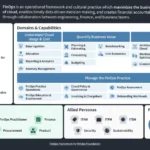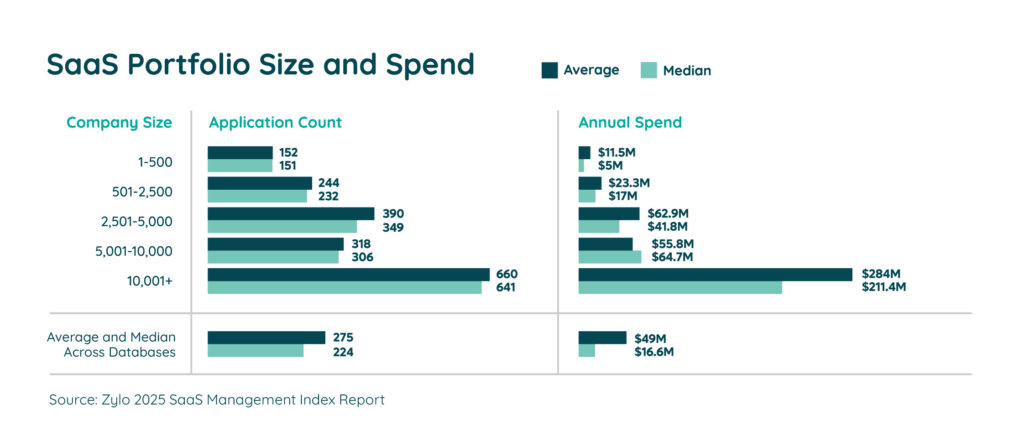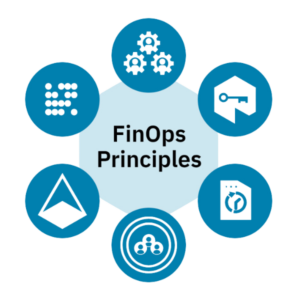Table of Contents
FinOps is a burgeoning practice that has emerged in response to the escalating costs associated with cloud technology. FinOps fosters a collaborative environment, bringing together engineering, finance, technology, and business teams to form a unit that makes informed, data-driven decisions regarding cloud expenditures. This interdisciplinary approach promotes efficiency and optimizes spending across the board.
But what exactly is FinOps, and how does it intersect with Software as a Service (SaaS)? Understanding this connection becomes more vital as more organizations rely on SaaS to meet their operational needs. This exploration delves into the essence of FinOps and illuminates its relationship with SaaS Management, highlighting how these practices collectively enhance organizational agility and financial acumen.
What Is FinOps?
FinOps, as defined by the FinOps Foundation—the organization that pioneered this practice—is an operational framework and cultural shift designed to maximize the business value derived from cloud expenditures. This approach facilitates timely, data-driven decision-making and fosters financial accountability across various departments. It achieves this through enhanced collaboration among engineering, finance, and business teams.
The term “FinOps” is a blend of “finance” and “DevOps,” emphasizing the critical cooperation between business and engineering teams. This synergy is a cultural practice that reshapes how organizations handle cloud spend.
The practice of FinOps revolves around three main domains:
- Understanding Cloud Usage and Cost: This involves tracking and analyzing how cloud resources are used within the organization, helping to identify patterns and potential inefficiencies.
- Quantifying Business Value: FinOps helps organizations measure the value cloud services bring to the business, ensuring that investments align with business outcomes.
- Optimizing Cloud Usage and Cost: This domain focuses on reducing waste and maximizing the efficiency of cloud spending through strategic measures such as right-sizing services and negotiating better terms with providers.
By integrating these domains, FinOps empowers organizations to manage and optimize their cloud resources in alignment with their strategic business objectives.

How SaaS Fits into FinOps
In FinOps, optimizing cloud costs is the primary goal, and a significant component involves effectively managing SaaS usage and costs. With the recent inclusion of Licensing & SaaS in the “Optimize Cloud Usage & Cost” domain of the FinOps framework, there is a clear emphasis on the strategic management of SaaS resources.
“Finance and leadership are realizing it’s creeping up to match cloud spend, and that’s forcing the conversation. The FinOps Foundation is signaling the same thing: SaaS needs to be part of the FinOps model.”
— Erdi Erdem, Certified FinOps Expert and Sr. Solutions Consultant at Zylo
This addition to the framework focuses on “understanding and optimizing the impact of software licenses and SaaS investments on an organization’s cloud cost structure and value.” It involves a deep dive into vendor-specific licensing terms, use rights, and pricing options.
The goal is to plan for appropriate usage that minimizes risks such as over-deployment—which can lead to compliance issues—or under-deployment, which results in wasted resources. Collaboration across finance, procurement, and legal teams is essential to streamline this process.
This development suggests several key insights:
- Recognition of SaaS Importance: There is a growing acknowledgment of SaaS’s significant role in overall cloud expenditure. As reliance on SaaS increases, so does the need for specialized strategies to manage these costs effectively.
- Application of FinOps Principles to SaaS: Core FinOps principles such as usage optimization and rightsizing are now being applied to SaaS Management. This encourages organizations to integrate SaaS Management into their broader FinOps practices, using the same level of rigor and discipline that they would to manage other cloud resources.
- Evolving FinOps Practices: As the challenges of managing SaaS become more complex, FinOps best practices are evolving to address these issues. This adaptation ensures organizations can continue to derive maximum value from their SaaS investments while maintaining control over their cloud spending.
By integrating SaaS Management into the FinOps framework, organizations can ensure that their SaaS expenditures are justified and optimized for cost and business value. This alignment is crucial as businesses continue to leverage SaaS solutions to drive their operations forward in an increasingly cloud-centric world.
Alignment with Zylo’s Approach to SaaS Management
The FinOps Foundation’s recommendations on license management align strongly with Zylo’s philosophy and strategic approach to SaaS Management, emphasizing its critical role within organizational frameworks. This alignment underscores the importance of addressing the significant financial impact and operational complexities of SaaS and license management.
Significance of SaaS Costs
“In some organizations, the cost and scale of SaaS or licenses may be significant and may represent a large area of focus for FinOps teams because of the scale of its impact on value.”
This highlights a major issue that Zylo addresses. On average, organizations spend $49M annually on SaaS licenses, according to our 2024 SaaS Management Index report. In larger enterprises, specifically those with over 10,000 employees, this spend escalates to an average of $284M annually.
These figures illustrate the financial weight of SaaS investments and reinforce the need for strategic management to optimize these substantial costs.

Holistic Management of SaaS
“SaaS products and software licenses are often used in place of IaaS cloud services, so FinOps teams should have a clear understanding of how they are being used, how to quantify their value when used, and effectively manage their use over time.”
Zylo champions a comprehensive, data-driven approach to SaaS Management that enhances visibility across the board. Effective management relies on deep insights into SaaS usage, expenditure, and utilization, critical for optimizing renewals and managing subscriptions efficiently.
Collaborative SaaS Management
“Understanding how the organization buys software licenses and SaaS products is critical, and it must involve the procurement persona, which is typically responsible for procuring licenses and software on behalf of the organization. In addition, if the organization has an ITAM or SAM function or team, integrating with that team will be crucial to share information about how externally purchased licenses and software are being used, coordinate planning for the use or retirement of these services, and to assess and manage the risk associated with contractual requirements in these contracts.”
Zylo consistently promotes the idea that effective SaaS Management is a collaborative endeavor. Success in this area is achieved when IT, Procurement, and Software Asset Management (SAM) teams work in unison on initiatives such as application rationalization, renewals, and governance. Zylo’s platform is designed to foster this collaboration, providing essential data to all stakeholders.
These insights validate Zylo’s approach and highlight the platform’s capacity to integrate seamlessly with FinOps strategies, thereby enhancing the overall management of cloud and SaaS expenditures within an organization.
6 Key Principles of FinOps (and Their Relevance to SaaS Management)
FinOps principles not only streamline cloud cost management but also have direct applications in optimizing SaaS operations. Here’s how these principles align with and enhance SaaS Management:

Collaboration Across Teams
- FinOps: Finance, technology, product, and business teams must work together to enhance operational efficiencies.
- SaaS Management: Collaboration is equally essential. IT, Software Asset Management (SAM), and Procurement teams must work together to manage SaaS resources effectively. This unified approach helps align SaaS usage with business needs and ensures that investments are justified and beneficial.
Decisions Driven by Business Value
- FinOps: Emphasizes making decisions based on unit economics and value-based metrics rather than aggregate spending.
- SaaS Management: Similarly, decisions regarding SaaS applications should be driven by their business justification and return on investment (ROI). Understanding each app’s value to the organization is crucial for cost-effective SaaS Management.
Ownership of Cloud Usage
- FinOps: Encourages every team to take accountability for their cloud usage and costs.
- SaaS Management: In the SaaS realm, app owners must manage their applications’ usage and impact. Since SaaS applications are widely distributed across organizations, clear ownership is essential for controlling costs and ensuring efficient use.
Accessible and Timely Data
- FinOps: Stresses the importance of having accessible and timely data about cloud spending that is accessible to all stakeholders.
- SaaS Management: This principle directly applies to SaaS Management, where comprehensive visibility and real-time data about SaaS usage and expenditure is vital for effective management and optimization.
Centralized Team Drives Initiatives
- FinOps: A centralized team is tasked with developing and implementing best practices around cloud usage within a shared accountability framework.
- SaaS Management: Similarly, a dedicated team should oversee SaaS Management, developing strategies that align with organizational goals and ensuring that SaaS investments are managed effectively across the board.
Leveraging Variable Cost Models
- FinOps: Encourages organizations to take full advantage of the cloud’s variable cost model through proactive design and continuous optimization.
- SaaS Management: This principle applies to managing SaaS by advocating for proactive strategies like regular review of subscriptions and usage patterns to ensure that SaaS investments are aligned with current needs rather than being periodically overhauled.
These principles highlight the synergy between FinOps and SaaS Management, demonstrating how strategies for optimizing cloud costs can be adapted to manage SaaS investments. By applying these principles, organizations can enhance their operational efficiency and better control their software expenses.
Partnership: The Future of FinOps and SaaS Management
As the digital landscape evolves, so does FinOps, which increasingly reflects the critical role of SaaS in modern software management. Integrating FinOps with SaaS Management is not just a trend but a strategic alignment reshaping how organizations approach cloud and software expenses. This growing partnership is poised to unlock the full potential of both practices, offering organizations a powerful opportunity to enhance control over their expenditures and maximize the business value from their cloud investments.
Joe Ryder, Senior Manager of Software Asset Management at McKesson, emphasized the importance of this evolving partnership and benefits of collaborative strategies on the SaaSMe Unfiltered podcast.
“There is definitely a partnership between FinOps managers and software asset management. The best strategy to understanding each other’s world is to actually sit down with each other and share ideas and experiences over time, because our life is going to change in the next five years.”
Related Content from FinOps X 2025: How The Home Depot is Bringing SaaS into FinOps
Watch Zylo Co-Founder Ben Pippenger and Ridge Fussell of The Home Depot explore what it takes to manage SaaS with a FinOps mindset.
Looking to delve deeper into integrating FinOps and SaaS Management? Explore more in the session The Principles of FinOps + Managing Your SaaS Environment from SaaSMe 2024. It provides valuable insights and strategies for navigating the complexities of managing software assets in a cloud-driven world.

